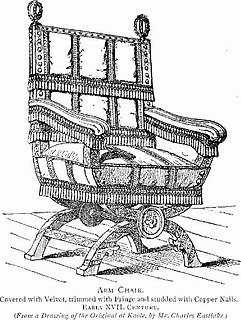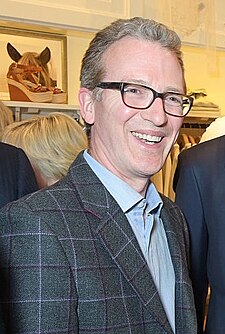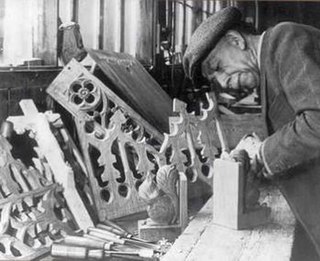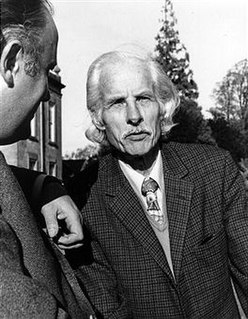 W
WZeev Aram, OBE was a British furniture and interior designer. He was the founder and chairman of Aram Designs Ltd, a modern furniture store in London's Covent Garden serving both the retail and contract market. He is responsible for introducing to the London market designers such as Marcel Breuer, the Castiglioni brothers, Mies van der Rohe, and Le Corbusier.
 W
WChristopher Cattle is a British furniture designer who has developed a process of growing furniture by shaping living trees. Cattle calls his work GrownUp Furniture but it is also known as Grown Furniture.
 W
WRobin Day, OBE, RDI, FCSD was one of the most significant British furniture designers of the 20th century, enjoying a long career spanning seven decades. An accomplished industrial and interior designer, he was also active in the fields of graphics and exhibitions.
 W
WCharles Dillon was a British furniture designer. He and his wife, Jane Dillon ran an international design studio between 1971 and 1982 making significant contributions to furniture design and lighting design across America and Europe. Their studio archives are held at the Victoria and Albert Museum.
 W
WTom Dixon, OBE is a self-taught British designer. He is best known as the Creative Director of the eponymous brand 'Tom Dixon', which specializes in the design of lighting, furniture and accessories.
 W
WCharles Locke Eastlake was a British architect and furniture designer.
 W
WErnő Goldfinger was a Hungarian-born architect and designer of furniture. He moved to the United Kingdom in the 1930s, and became a key member of the Modernist architectural movement. He is most prominently remembered for designing residential tower blocks, some of which are now listed buildings.
 W
WAshley Louis David Hicks is a British interior design blogger. He is the only son of Lady Pamela Hicks and David Nightingale Hicks. Hicks blogs about architecture and interiors in Europe, the United States, and the United Kingdom. He also has a fabric line for Lee Jofa and furniture lines.
 W
WInce and Mayhew were a partnership of furniture designers, upholsterers and cabinetmakers, founded and run by William Ince (1737–1804) and John Mayhew (1736–1811) in London, from 1759 to 1803; Mayhew continued alone in business until 1809. Their premises were located in Marshall Street but were listed in London directories in Broad Street, Soho, 1763–83, and in Marshall Street, Carnaby Market, 1783–1809. The partnership's volume of engraved designs, The Universal System of Household Furniture, dedicated to the Duke of Marlborough, was issued in imitative rivalry with Thomas Chippendale; Ince, who was a subscriber to the first edition of Chippendale's Director, was chiefly responsible for the designs, while Mayhew contributed the greater part of the partnership's capital, kept the accounts, and was in closer contact with the firm's clientele among the nobility and gentry. The name of the firm originally appears to have been "Mayhew and Ince", but on the title page of The Universal System the names are reversed, suggesting that Ince was the more extensive contributor.
 W
WThomas Johnson (1714–1778) was an English wood carver and furniture maker.
 W
WJudith Kit Kemp, is a British interior designer, and founder of Firmdale Hotels, a chain of ten hotels in London and New York. She is married to Tim Kemp. They were jointly awarded an MBE in 2012.
 W
WJohn Dennis Lennon was a British architect, interior designer, and furniture designer. He was responsible for the interior design of the Queen Elizabeth 2 and of 190-192 Sloane Street, London.
 W
WTimothy Oulton is a British furniture brand named after its founder and creative director. As of June 2016, it has 37 retail galleries worldwide. Its products are also retailed through Restoration Hardware in the U.S.
 W
WGerald Summers (1899–1967) was a British mid-century modern furniture designer. He came to prominence with his design for the Bent Plywood Armchair. Another of his noted works was the Two-Tier Table. Both pieces were designed in 1934 and manufactured by Makers of Simple Furniture, the firm he founded.
 W
WRobert (Mouseman) Thompson, also known as 'Mousey' Thompson, was a British furniture maker. He was born and lived in Kilburn, North Yorkshire, England, where he set up a business manufacturing oak furniture, which featured a carved mouse on almost every piece.
 W
WSir George Lowthian Trevelyan, 4th Baronet was a British educational pioneer and a founding father of the New Age movement. In 1942, after listening to a lecture by Dr Walter Stein, a student of Rudolf Steiner, he transitioned from being agnostic to a new age spiritual thinker, and even studied anthroposophy in the coming years. He first became a History teacher at Gordonstoun School, pioneering radical education methods. After World War II, in 1948, he became the Warden at Attingham Park, a pioneering adult education college in Shropshire, from where he retired in 1971 to found the Wrekin Trust, an educational charity. He was subsequently associated with the Soil Association, the Findhorn Foundation, the Teilhard de Chardin Society and the Essene Network. In the last 15 years of his life he was the focus of many lecture tours and meetings. He also wrote numerous books, including A Vision of the Aquarian Age (1977), Operation Redemption (1981), Summons to a High Crusade (1985) and finally Exploration into God (1991). He was awarded the Right Livelihood Award in 1982 for "educating the adult spirit to a new non-materialistic vision of human nature."
 W
WUtility furniture was furniture produced in the United Kingdom during and directly after World War II. The furniture was produced under a government scheme which was designed to cope with raw material shortages and rationing of their usage. Introduced in 1942, the Utility Furniture Scheme continued into post-war austerity and lasted until 1952.
 W
WLeonard Francis Wyburd was a British painter, interior designer and furniture designer. He was broadly part of the Arts & Crafts movement, and the head of Liberty's Furnishing and Decoration Studio from its foundation in 1883 until he left in 1903.